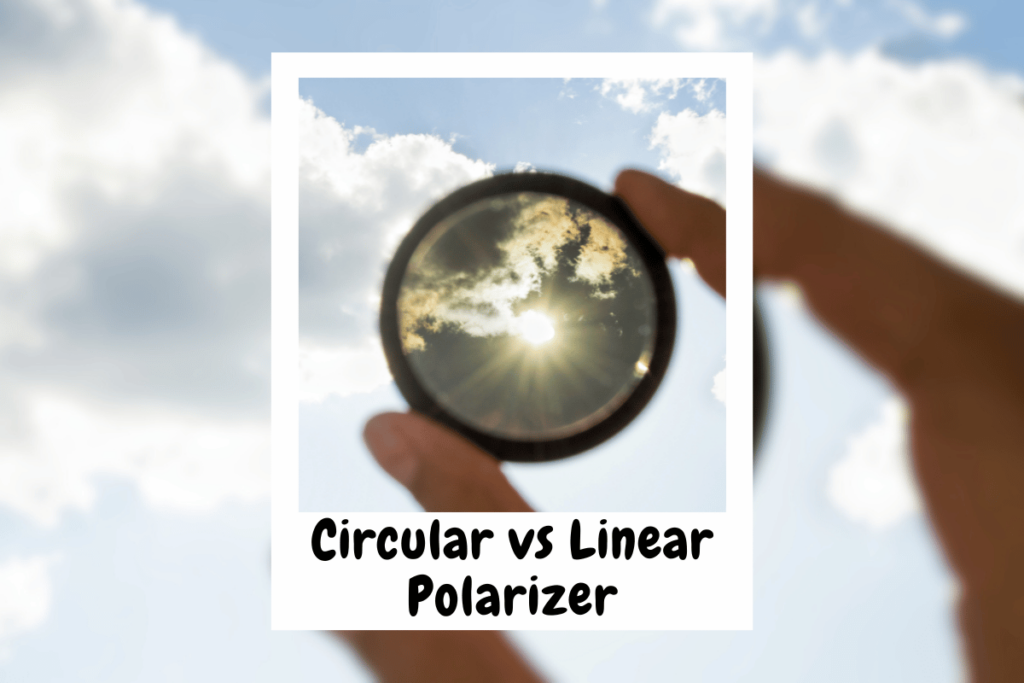
Ever wondered why some photos have that eye-popping clarity and contrast? It makes skies bluer and foliage greener. That’s often the magic of a polarizer, a filter that controls which light rays enter your camera lens. It’s like sunglasses for your camera, enhancing colors and reducing glare.
Choosing between a circular and linear polarizer can be confusing. Both can dramatically improve your images. However, they’re not created equal, especially for mirrorless cameras.
You’re probably asking yourself: which polarizer should you use for your mirrorless camera? Let’s dive into the differences. We’ll find out which one will give your photos that professional edge.
Circular Polarizer
When you’re delving into the world of photography with your mirrorless camera, understanding the nuances of polarizers can truly elevate your image quality. Let’s break down the circular polarizer. It’s your go-to gadget for cutting glare and enhancing those vibrant hues in your shots.
How Circular Polarizers Work Their Magic
Imagine a tool that lets in the good light while keeping the bad out. That’s your circular polarizer. Its secret lies in a special coating that filters polarized light. Twist the front element to control the amount of filtered light. This allows for crisper skies and greener foliage. It also removes unwanted reflections from water or glass.
The Pros of Circular Polarizers
They’re a creative boon, enabling you to bring out the best in nature shots, cityscapes, and even through-the-window portraits. Circular polarizers are fantastic for:
- Slicing through the glare on a sunny lake
- Making the colors pop in a fall landscape
- Adding definition to clouds against a blue sky
You’ll find the effect is like dialing up the contrast and saturation. You won’t need to touch an editing app.
Watch for the Flip-Side
But keep in mind, it’s not all smooth sailing. Circular polarizers can have their quirks:
- Loss of Light: Typically, they reduce light transmission by 1-3 f-stops. This depends on the quality and brand. Be ready to compensate with your camera settings.
- Vignetting: Wide-angle lens enthusiasts, take note. A thick polarizer might introduce dark corners into your wide-open views.
- Adjustment Hassles: Finding the sweet spot for the desired effect takes a bit of fiddling around. It’s not always a quick twist. This is especially true when you’re racing against changing light conditions.
Remember, the choice of a circular vs linear polarizer for your mirrorless camera comes down to picking the tool that complements your style and goals. With the right circular polarizer, you’re well on your way to capturing images. Your followers might just ask, “How’d you get that shot?””
And there you have it. Get out there, twist that polarizer, and watch as your photos transform before your eyes.
Linear Polarizer
The Mechanics of Linear Polarization
Ever wondered how to give your photos that dramatic punch? Let’s talk about linear polarizers. Linear polarizers block polarized light in just a single plane. In contrast, their circular counterparts do not. This characteristic is shrewd for doing two key things. It punches up moody skies and cuts through haze to bring out crisp, clear landscapes.
Imagine watching a play through a set of blinds. Twist them one way and you can see all the action. Twist them another and it’s curtains closed. That’s sort of how a linear polarizer functions on your lens. By rotating the filter, you can control reflections and glare.
Perks and Quirks of Linear Polarizers
So, where does a linear polarizer fit in your kit? It’s not just about those dramatic skies. These filters also reduce reflections on non-metallic surfaces. This makes water look transparent and windows invitingly clear. Think of it as your go-to for mesmerizing seascapes and urban shots with a twist. While we’re at it, here’s why a linear polarizer sometimes outshines the more common circular polarizer for mirrorless cameras:
- Better clarity: They can often provide sharper detail because they don’t affect autofocus systems.
- Simpler design: Less glass in your lens’ path means fewer chances for image degradation.
On the flip side, modern photography comes with some caveats for linear polarizers. They might throw a wrench in your autofocus and metering. Since they align light in one direction, it can confuse the sensors that rely on non-polarized light. And with mirrorless cams rocking electronic viewfinders, you could run into some compatibility hiccups.
Despite their quirks, don’t write off linear polarizers as ancient tech! When you’ve got the shot all set up but need to cut through reflected light or haze, twisting on a linear polarizer could be the trick you need. Just remember that while they’re quite the wizards for certain shots, there’s no one-size-fits-all in photography gear. Each piece has its role, and the savvy photographer knows when to pull each tool out of the bag. Keep experimenting, and you’ll find the perfect balance for your camera setup.
Comparison and Recommendation
When you’re out capturing those stunning landscapes or architectural marvels with your trusty mirrorless camera, the choice between circular and linear polarizers can make all the difference. You want to get it right.
Performance Analysis
Let’s dive into the performance side by side. Many photographers use circular polarizers. They’re especially popular with modern mirrorless camera users. They work seamlessly with the camera’s advanced features, like autofocus and through-the-lens metering. Linear polarizers are effective at cutting through glare and enhancing skies. However, they may lead you into trouble with these systems. They can disrupt the communication between your camera’s sensors and the lens. It’s like trying to have a conversation through a closed window. It’s frustrating and results in lost moments.
Compatibility Considerations
Thinking about compatibility, circular polarizers again take the lead. They’re like the universal remotes of the filter world. You can just pop one onto your camera, and you’re good to go. Auto-exposure and autofocus? Check and check. Linear polarizers are more like that old remote you can’t find batteries for. You might nail some shots, but with a mirrorless camera, they often just aren’t worth the hassle.
Using Circular Polarizers Effectively
For using circular polarizers, here are some quick-fire tips to get you up to speed:
- Check your filter thread size. Each lens has its own, so don’t play a guessing game.
- Quality is king. A poor-quality filter is like a bad pizza crust—it ruins everything.
- Look for multi-coated filters to reduce lens flare and protect your beloved lens.
Polarizers are all about casting out reflections and making colors pop. Remember that. Circular polarizers don’t affect your camera’s intricate features. They’ll keep things smooth, like butter on a hot pancake.
Conclusion
When choosing between a circular and linear polarizer for your mirrorless camera, consider your specific needs and shooting conditions. You’ve seen how each has its perks. For example, some enhance colors, while others get sharper details in your images. Circular polarizers are versatile and often better suited to modern cameras. But if your goal is to take classic landscape photos with dramatic skies, a linear polarizer is the right choice!
Frequently Asked Questions
What are circular polarizers used for in photography?
Circular polarizers are used to enhance image quality by filtering polarized light. They help reduce glare, enhance colors, and add definition to images.
How do circular polarizers work?
Circular polarizers control the amount of polarized light that enters the camera lens, allowing photographers to manage reflections and saturation for a better image outcome.
What are the drawbacks of using circular polarizers?
The drawbacks include a reduction in the amount of light reaching the camera sensor, potential vignetting with wide-angle lenses, and the need for manual adjustment to achieve the desired effect.
What is the difference between circular and linear polarizers?
Circular polarizers filter polarized light in multiple directions while linear polarizers block out polarized light in a single direction, which affects how they interact with camera systems, particularly autofocus and metering.
Can linear polarizers be used with mirrorless cameras?
While linear polarizers can be used with mirrorless cameras, they may cause issues with autofocus and metering systems due to compatibility aspects.
What should photographers consider when choosing between circular and linear polarizers?
Photographers should consider the compatibility with their camera’s autofocus and metering systems, as well as the desired photographic effect, such as reducing glare or enhancing skies.
Are there effective usage tips for circular polarizers?
Yes, tips for using circular polarizers effectively include adjusting the filter while looking through the viewfinder or LCD screen to achieve the desired amount of reflection reduction and color enhancement.

